Crossing the Line
How Reno City Council threw planning out the window for Jacobs Entertainment
Happy July to all. I’d hoped to publish before the July 4th holiday, but hadn’t quite finished a post before heading out of town, so I decided to add a few videos and dive back in today with an intensive look at how City Council jettisoned its urban planning principles for the sake of the J Resort. But first, a few words on the primaries.
By now you’re likely aware that a recount of the Ward 1 vote count was requested and then withdrawn, making the results I wrote about on June 24th the final tally. The results of my (very informal) poll about the low voter turnout indicate that most respondents feel registered voters didn’t participate in the local primaries out of apathy/sense of irrelevance or, in second place, unfamiliarity with the candidates.
If true, both are troubling—first of all, because the decisions made by City Council affect each and every resident; and secondly, because learning what candidates stand for (and have done) is the key to electing representatives who truly represent the needs and desires of their constituents. We generally rely on local media or other trustworthy organizations to help us distinguish between candidates, but the perception of low stakes and limited coverage of local races heightens the challenge. I’ve done my best to amplify available resources and information, but clearly much more is needed. If you have ideas, please let me know in the comments.
Obviously one of the most important considerations to me is how seriously (and how consistently) City Councilmembers treat their responsibilities regarding urban planning (of which they have many). After all, I didn’t start writing The Barber Brief back in 2021 because I thought that was going particularly well.
So today, I want to focus on Council actions toward an entity that has received the support of many former and seated Councilmembers: Jacobs Entertainment.
Planning and Anti-Planning
My critique of City actions regarding Jacobs Entertainment’s acquisitions and activities on the west side of downtown Reno is no secret. I’ve been skeptical of the company’s claims and promises from the very beginning and even more baffled that a City Council majority has continued to swallow them hook, line, and sinker.
A few weeks ago, Downtown Makeover reported that J Resort has filed a $16 million permit to start their next phase. What they’re building next is not news. They showed this image at their 12-month review in November—it’s an expansion of the existing structure with a huge porte-cochère for vehicle entry and drop off at the corner of West 4th and Ralston, plus a new lobby, more gaming, a restaurant, and meeting space.
There’s nothing new about the basic concept here, either. It’s the same pattern we’ve seen all of Reno’s major gaming properties follow as they expand. And as a result, it looks like exactly what it is: a resort casino.
What it doesn’t look like is a downtown.
What’s been most striking to me about Jacobs’ excruciatingly drawn out promise to reveal some grand “master plan” isn’t what they’ve actually done; it’s how they’ve sold what they’re doing as something completely different than what it actually is, as though the company is somehow breaking the mold for gaming properties by transforming the scores of parcels they’ve acquired into the “dynamic mixed-use entertainment district” described in their Development Agreement, with “an array of…commercial, retail, plaza, green space, convention and entertainment venues.”
If you turn your head sideways and squint, you might be able to identify examples of each of those claimed components, as long as you understand that all of those things they list are just part of the same monolithic, corporate-owned resort, and may even already have existed. Commercial? Well, they bought the Gold ‘N Silver. Retail? There’s a casino boutique inside the J Resort for all your souvenir and snacking needs and supposedly a coffee shop is coming to their apartment building on West 2nd Street. Plaza and green space? There’s the private Glow Plaza festival grounds and apparently something called “Glow Gardens” that will incorporate the two historic houses that they moved from their original spots on Ralston Street to a parcel behind Chapel of the Bells. Whatever venue or attraction it is to become, Jacobs owns it, too.
Back in January of 2023 I wrote a Brief called “Casinos in Context,” in which I laid out the importance of context to the development of Reno’s hotel casinos and to their consequences for urban revitalization. And I explained how the physical location of centrally-located gaming properties like Caesars Entertainment’s tri-property behemoth known as The ROW warrants a completely different orientation to its context in order to contribute to the walkable, dense, and diverse environment that Council claims to want downtown to become. And yet, Caesars continues to flagrantly ignore any entreaties to do so, while still retaining favored status and basically getting everything they want from the City (bike lanes on Virginia Street, use of public streets and plazas for casino events, partial control of City-owned facilities like the Reno Events Center, Downtown Reno Ballroom, National Bowling Stadium, etc.).
What’s now clear is that the sprawling resort Jacobs Entertainment is developing on the west side of downtown replicates all the same problems exhibited by The ROW, only covering an even larger area, catering even more to vehicles over pedestrians, and making a mockery of the whole notion of “master planning” and urban revitalization.
And City Council not only allowed but encouraged and enabled them to do it.
And here’s what’s so maddening about the whole thing: the City of Reno could have been a world innovator in demonstrating how casinos might seamlessly integrate into a dense urban landscape. As gaming proliferates across the country, more and more urban areas might welcome an example of how to activate languishing downtowns while embracing the economic engine of large-scale gaming—showing how casinos could become outward-facing contributors to street activity, utilize a city’s unique historic fabric to strengthen a sense of place, and promote a walkable and sustainable environment by embracing dense development over excess parking.
As a city whose original downtown was practically destroyed by the massive introduction and then closure of dozens of casinos, Reno’s achievement of such a feat would be the ultimate success story.
And our City’s leaders had the leverage to do it, too, because, in a rare example of gaming interests actually needing something from local government, Jacobs Entertainment wanted a whole slew of benefits and incentives ranging from sewer connection fee and pedestrian amenity credits to special lighting, signage, and generous noise allowances, exclusive agreements to purchase City property, and more.
The City also had in its pocket its publicly stated commitment to creating a walkable downtown, activating dead street frontage, and prioritizing sustainability, density, and placemaking, which they continue to attempt to implement just blocks away.
Instead, they blew it, following the same pattern I identified in my book, Reno’s Big Gamble, and throwing deliberate and thoughtful planning out the window to accommodate the desires of moneyed interests promising grand transformations. You may recall that back in February of 2022, I dedicated an entire Brief titled “Reno’s Next Big Gamble” to how Reno pushed planning aside for Jacobs Entertainment.
Reno's Next Big Gamble
Anyone who studies the development of cities becomes keenly aware of the perils of failure to plan, to act in haste without considering the full breadth of potential repercussions, to make a series of uncoordinated decisions without considering how (or even if) all the pieces will fit together. Throughout history, the failure of cities to thoughtfully p…
I won’t repeat everything I wrote there, but more than two years later we can see the snowballing consequences of the City’s failure to abide by its own stated planning principles when it comes to this company. So let’s look at what Jacobs Entertainment is up to now and what City government could have done about it.
J Resort’s Parkingpalooza
It’s no secret that resort casinos have an insatiable appetite for parking. Whether trying to attract tourists or residents, the existence of massive parking capacity—even if rarely used—fulfills their desire to accommodate any and all vehicle owners who might at some point want to drive to their resorts all at the same time. Those accommodations might come in the form of parking garages like those at The ROW, the former Harrah’s Reno, and the Peppermill, or huge surface lots like those at the Grand Sierra Resort and Atlantis. If they have the acreage, properties with surface lots can additionally benefit from using them for occasional special events (which itself demonstrates that they’re not actually needed for parking).
That may be fine for suburban-style resorts outside of a city center, but there are few things more antithetical to the creation of a walkable urban core than parking garages and surface parking lots. And while massive parking garages are problematic for creating ugly blocks-long surface-level dead zones of inactivity, surface lots do all that and more (and no, plopping a caged sculpture in front of them doesn’t change that).
Jacobs Entertainment has gone stark paving mad. And since you may not have been down there in a while, I’ve made a video of their current Parkingpalooza. Take a look.
If you didn’t catch it, that’s SIX variously shaped and sized surface parking lots on or within a block of West 4th Street alone from West to Vine Streets, encompassing the former sites of the Lido Inn, Star of Reno, El Ray, Reno, In-Town and City Center Motels and Mardi Gras Lodge (all between Arlington and West Streets), the Rancho Sierra Motel (between Nevada and Ralston), multiple historic homes on the east and west side of Ralston Street, and now the Desert Rose Inn and Courtyard Inn (which back in 2019 Jacobs said they were going to develop into a 38-unit apartment project called Loft 601, but nope, it’s a parking lot).
Evidence of the detrimental impact of parking lots on urban centers is overwhelming. In “How Parking Lots Became the Scourge of American Downtowns,” (Bloomberg (6/5/2014), Sarah Goodyear reports studies showing that increasing parking actually had a negative impact on economic vibrancy in the cities examined, continuing, “Whether you agree with their premise or not, there’s no arguing that huge surface parking lots create an atmosphere that is inherently hostile to the pedestrian: dull, unbearably hot in summer, windswept in all seasons, and potentially menacing, especially to women returning to their cars alone after dark.”
As a City Observatory Commentary explains, parking lots can function as “highly subsidized polluters,” allowing property owners to pay lower property taxes that incentivize demolition. Furthermore, the sheer creation of parking itself creates the demand for even more parking. As the Parking Reform Network explains:
“When people can cheaply and easily park their cars, they’ll use them more often. When, because of parking lots, it’s difficult to walk somewhere, then driving and parking might be the only choice. When most people drive, it’s difficult to generate the density and demand for good transit service.”
You think any of Jacobs’ patrons at the Gold Dust West are going to walk over to the J Resort if they can get back in their car, drive down and park right in front of it? Please.
Deliberately adding more surface parking lots is especially egregious in Reno, recently identified as the fastest-warming city in the country. Surface parking lots are a primary contributor to urban heat islands, the subject of a KUNR report last year that explained how “Dark materials used for streets and buildings attract more heat. This means that city centers tend to be 15 to 20 degrees hotter than outlying areas, exposing people who live in heat islands to health risks like heatstroke and even death during extreme heat waves.” With Reno currently undergoing a record-breaking heatwave, it’s clear that these are no idle threats.
And if even that isn’t enough, here’s the part that should really set our City Council on fire: the J Resort has no need for this massive parking surplus. Recall that when Jacobs Entertainment went to the Planning Commission for approval of the Glow Plaza in March of 2022, they assured the commissioners that they didn’t need any additional parking to accommodate patrons of the venue—and in fact, that they had so much available parking that they would like the capacity of their “smaller” events to be increased from 2,000 to 3,700 people. The Planning Commission agreed, nearly doubling the allowed capacity for “by right” events on the Glow Plaza as well as granting them unlimited decibel levels for up to 20 events a year (even though the venue is not zoned Entertainment District). And Jacobs added more parking anyway.
I can already anticipate a response that these surface lots are only “temporary.” One of the company’s many “plans” included construction of a massive parking garage on the west side of Ralston that accompanied their since-withdrawn 2020 application for the City to abandon the entire stretch of Ralston between West 3rd & West 4th Streets—you can view an image here. And now that they’ve acquired [7/10/24 edit for clarification: arranged to acquire] the Sarrazin Arms property, they’ll be cleared to build that garage (Jacobs recently suggested the land swap with RHA and construction of a new affordable property on West 2nd Street will happen in three years, after he refinances his gaming company).
But there’s no guarantee that will happen (not that a massive parking garage is itself a boon to urban revitalization) or that if it does, the company will convert all those surface parking lots to the dense development Jacobs promised we’d see on West 4th Street back in March of 2022. (He also said it would be more difficult to build housing along the corridor because the property was so expensive—then he bought even more of it at astoundingly inflated prices and still decided to replace the motels he’d purchased with expensive surface parking lots.)
So why construct all this unneeded parking? Why not just keep the structures they purchased in place for a few more years, until they can construct their beloved parking garages? Why not renovate more of those motels into housing or lodging, as they did with the Crest Inn (now Renova Flats), and as others in Reno (Best Bet Motor Lodge, Kramer’s), Las Vegas (Ferguson’s, The Downtowner), and countless cities from San Francisco to Austin, Texas have done?
There are so many answers, none of them good: obviously they wanted to accumulate their much-desired sewer connection fee credits. And they (and Mayor Schieve) really really wanted those motels gone, even though they were not only housing of last resort for some of our most disadvantaged residents but ripe prospects for revitalization and incremental, pedestrian-friendly development, despite Jacobs Entertainment and the Mayor’s continued and impassioned insistence that they were all—every last one of ‘em—blighted, crime-ridden, irredeemable cesspools.
And it’s deeply and sadly ironic how Jacobs places his love for cars and car heritage at the center of his auto-centric resort, while simultaneously destroying nearly all of the historic infrastructure—the mid-century U.S. 40-era motels and motor lodges—not to mention the neon signs whose name he’s misappropriated for his day-glo LED-lined wall—that once made this corridor so distinctive and authentic. What a missed opportunity to turn it into something truly groundbreaking that would bring tourists and residents flocking. The failure of imagination crushes the spirit.
And what could City Council have done to prevent this superfluous surfeit of parking? A lot. A Development Agreement is specifically intended to guarantee benefits to both parties. They could, for instance, have done any of the following:
Prohibited Jacobs from constructing any surface parking lots along West 4th Street ever, requiring the corridor to be lined with active street-facing uses, and tucking any surface parking lots inside or behind them.
Placed a limit on the total number of new surface parking spaces to be constructed on the parcels Jacobs purchased from that point forward.
Prohibited the demolition of any structures without immediate plans to construct a new structure contributing to revitalization and walkability in their place.
But they didn’t. And here we are, with a corridor that clearly prioritizes cars over people, to the detriment of the environment, revitalization, and any hapless pedestrian wandering through, for years, perhaps decades or even longer, to come.
Amenities for Whom?
Jacobs’ decision to build these massive temples to vehicular preeminence (soon to be joined, appropriately, by a showroom for his car collection in the J Resort parking garage) makes perfect sense when you recall an interview Jacobs gave back in March of 2022, where he stated his vision of what West 4th Street would become: the new vehicular entrance to downtown. It’s why he wanted those humongous signs on Interstate 80, on the corner of West 4th Street and Keystone, and arching over West 4th Street directing cars to his trademarked linear resort.
All that signage (which the City’s Development Agreement just handed the company on a silver platter) is still under litigation thanks to Scenic Nevada, and I hope it can all be summarily squashed now that Jacobs has ditched the whole “district” nonsense and anointed everything in his domain with the trademarked brand of “J Resort’s Reno Neon Line”—a moniker that clearly makes any relevant sign a branded billboard for their linear resort rather than an innocuous “area identification sign.” (And please, while we’re at it, can we now finally dispense with the ludicrous notion that this supposed “district,” much less a “line” extends all the way north to Interstate 80, encompassing property Jacobs does not and will never own?)
It’s not just the surfeit of parking lots that makes this stretch more and more hostile to pedestrians, despite the proliferation of "pedestrian amenity credits” the company accumulated through the itemized Development Agreement. Pedestrian Amenities are described in Reno’s Land Development Code, Section 18.04.1003 (a)(6) as such:
“Pedestrian amenities including walkways (outside of and through buildings), plazas, artwork, fountains, seating, landscaping, and recreational facilities in any combination shall be provided in an amount equal to one percent of the entire project's costs, exclusive of land and financing for buildings….Pedestrian amenities may be located outside of or within buildings if the amenities are accessible to the public at no cost.”
As Jacobs reported last November, they’ve already taken advantage of such credits granted them via the Development Agreement for art installations, concrete pedestals, landscaping, fencing, walls, lighting, and more, with a total credit stash of more than $2.3 million to draw upon. Now check out the next video, which I filmed last week.
I’m inspired here to quote placemaking guru Jan Gehl, cited in Jeff Speck’s masterful Walkable City: How Downtown Can Save America, One Step at a Time. As Gehl (founder of the studio Reno commissioned to create its recent Placemaking Study) writes, “Facades designed with long, horizontal lines make distances seem longer and more tiring…It is interesting to note that shops and booths in active, thriving commercial streets all over the world often have a facade length of 16-20 feet, which…means that there are new activities and sights to see about every five seconds” (Walkable City, p. 241). What does this path offer the pedestrian but visual and physical fatigue?
These “amenities” are not scaled or intended to offer interest and comfort to pedestrians; they are designed to brand the corridor and enhance its visibility to automobiles, something large-scale sculptures are particularly well-equipped to do. Time to claw some of those credits back, if you ask me.
The Empty Promise of a Master Plan
For some time, I was keeping close track of how many days it had been since November 15, when Jacobs’ representative Garrett Gordon promised that Jacobs would reveal his grand “Master Plan” in “60-90 days” (okay, it’s been 236). We’ve been hearing about a supposed Master Plan for years, and the City’s failure to actually demand one before signing a Development Agreement means those plans can constantly change, as they obviously have, again and again and again.
I’m sure we’ll soon get an earful—not just about Jacobs’ next permitted phase but the auto showroom, whatever Glow Gardens is, maybe even that parking garage, another hotel wing, a spa and pool, or that world-class amphitheater. Maybe they’ve found a buyer for the City-owned parcel on Keystone they were allowed to exclusively buy. Or maybe they’ll build something there themselves. Maybe, maybe, maybe.
Not having to deliver anything specific on any timeline, including any public benefits like affordable/attainable/workforce units or dense, mixed-use development means that the community has to rely on Jacobs’ voluntary largesse. Don’t criticize them or they might not ever construct any more housing, or donate any more funds to the Reno Housing Authority, or, say, political candidates. That puts them in the perpetual driver’s seat, precisely where they want to be. And it didn’t have to be that way. A resort casino plans for its customers, but a City is supposed to plan for all of us.
Truckee River Vision Community Open House
Dig Studio, the consultants hired by the City of Reno to design improved access to the Truckee River corridor through Reno, has completed a draft plan, which will be presented at a “community engagement open house” at Reno City Hall on Thursday, July 11. The open house runs from 4:30-7:30 pm with the presentation at 5:30 pm. More information and the link to participate virtually can be found here.
Be sure to check out my Citizen Guide for helpful resources and links for anyone hoping to become more informed and engaged in issues related to urban development (& more) in Reno.
As always, you can view this and prior newsletters on my Substack site, subscribe to receive each new edition in your email inbox, and follow the Brief (and contribute to the ongoing conversation) on X, Facebook & Instagram. If you feel inspired to support my writing and research with a financial contribution, you can sign up for a paid subscription through my Substack site or contribute to my Venmo account at @Dr-Alicia-Barber or via check to Alicia Barber at P.O. Box 11955, Reno, NV 89510. Thanks so much for reading, and have a great week.

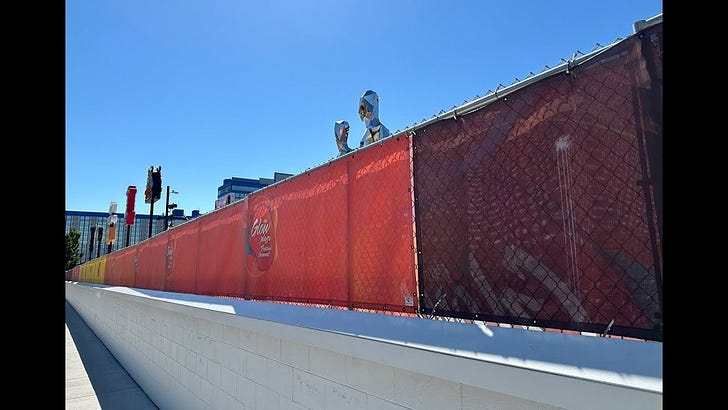


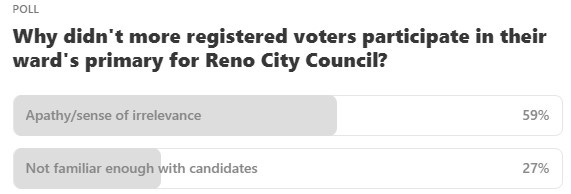
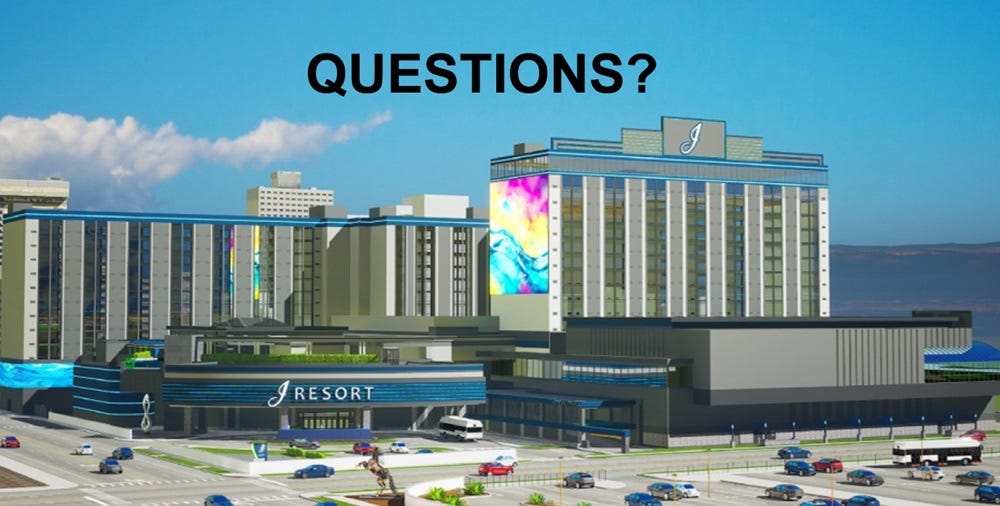
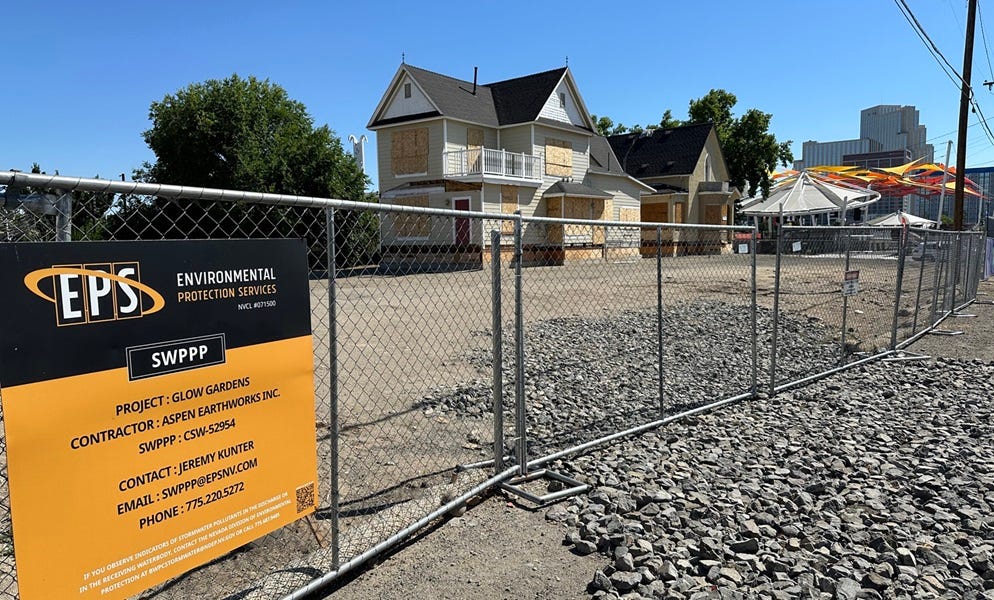
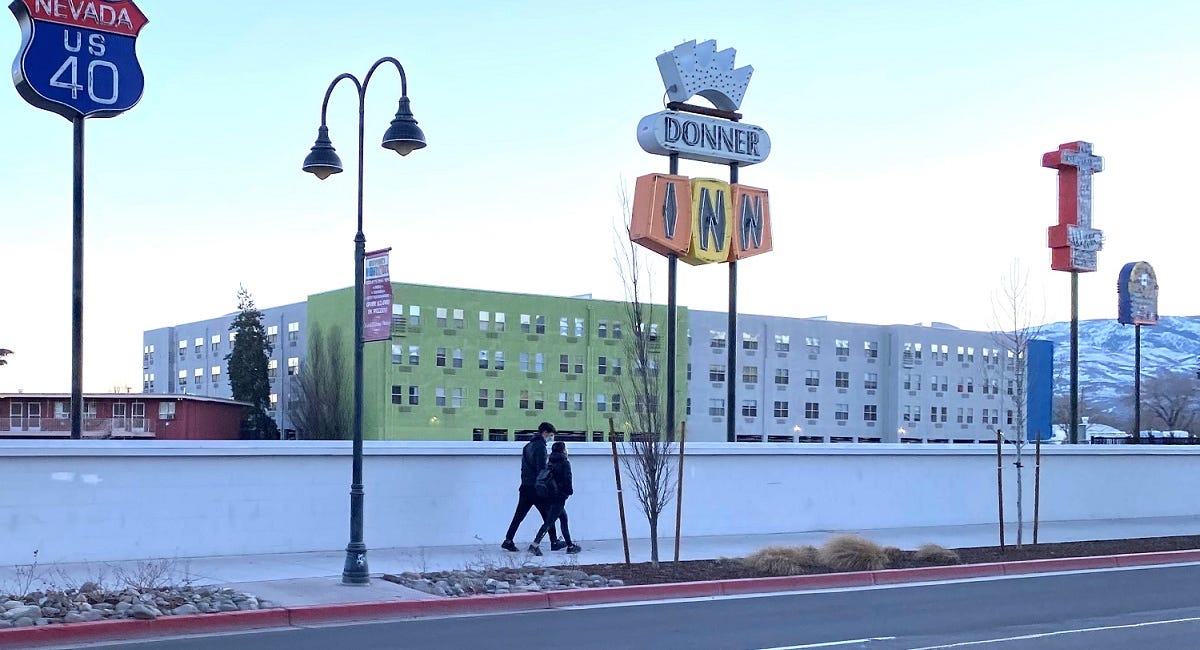
So very sad, the whole dang mess. It is infuriating to listen to Gordon at council meetings where he barely contains his disdain for the members. Every time I see that concrete ugly mess of a “resort” I hear Schieve’s comment she made at one meeting about Jacobs “we have to believe he’s a good guy.” Ughh
Yes Alicia, it is heartbreaking. By adding parking spaces they have added substantially to the valuation to the properties, with minimal investment expense and maximum flexibility for future development of whatever kind.. They use the Reno properties to beef up their balance sheet and reduce their interest rates on their borrowing for construction in more promising venues. It's Business Plan versus City Plan writ large. The City of Reno is the loser over and over again. Self-inflicted wounds?